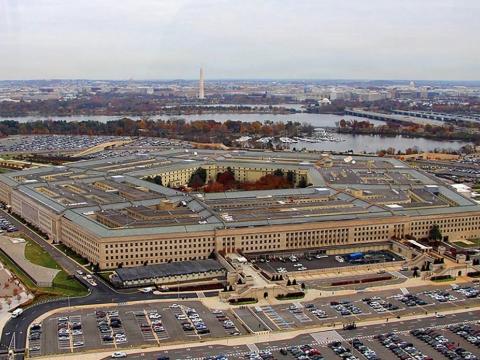Military Needs New Operational Paradigm
Command and control must morph into a feedback loop.
Editor’s note: This viewpoint is adapted from a speech given by Gen. Mattis at LandWarNet 2009.
Command and control is a subject that encompasses all military functions. No matter how brave soldiers are or how many billions of dollars are spent, command and control is essential in enabling the warfighter to execute commander’s intent.
Foremost, command and control (C2) is the glue that binds joint and coalition forces and interagency partners into a single team. A leader-centric, network-enabled approach to command and control is the best way to create unity of effort and harmony in the face of the fog and friction of war. And, such an approach demonstrates that command is inseparable from leadership and timeless in its overarching demands of achieving its end state.
The ramifications of command and control built around commander’s intent—a leader-centric approach where the network enables C2 but does not control it—are many. First, command and control implies trust. A commander must be willing to trust subordinates enough to decentralize decision making to the point where higher headquarters may be uncomfortable. Decentralized decision making is essential to gain speed of action. It is not, however, sufficient to just decentralize decision making. Young leaders must be trained and educated so that they are empowered to act on a commander’s guidance. And, they must be rewarded for taking initiative.
In addition to subordinates, commanders must trust all elements of the joint force as well, replacing the need to know with the need to share. As part of this need to share, commanders must ask three questions: What do I know? Who needs to know it? Have I told them?
Constant feedback loops are the key. Thus, a change in terminology is needed, from “command and control” to “command and feedback.” This is more than a rhetorical change; it is a change in how to think about and conduct operations.
It also is important to ask, “Does the network support my need to share?” In other words, the network should support how commanders want to fight. Commanders should not have to fight based on the constraints or limitations of the network. So, networks that support warfighters at the tactical edge are required. The needs of the warfighter who may have intermittent connectivity, low bandwidth or no connectivity at all must be addressed.
The goal is to provide a robust and agile communication network in any environment, but the warfighter must be able to fight without connection to higher headquarters. And, subordinate leaders must be expected to exercise initiative by executing commander’s intent, regardless of C2 system connectivity.
Second, commander’s intent often allows for faster decision making than the fastest electronic means because war is time competitive. As Napoleon said, “I may lose a battle, but I will not lose a minute!” Commander’s intent recognizes that battlefield opportunities are fleeting, and the enemy has an independent will. Actions cannot be predicted or ordered because all actions on the battlefield and war itself are fundamentally unpredictable. Commander’s intent recognizes that centralized decision making slows operations and cedes initiative to the enemy.
Third, commander’s intent accepts the reality of thinking, cunning enemies—not a passive, compliant enemy—who will conduct operations against the military’s designs. The force most reliant on computers and networks is the most vulnerable to disruption and degradation. Militaries must be ready to operate in complex, chaotic and degraded information environments and must be comfortable operating with and without all the systems and tools available in peacetime or in complex contingency operations.
Again, centralized decision making at high levels is most susceptible to a single point of failure and is least resilient in the face of enemy attacks. Remembering that the fundamental nature of war is unchangeable—even if the character of war is always changing—military forces must adapt to the changes in a manner consistent with war’s nature.
Fourth, while gaining highly capable C2 systems remains a priority, that gear must enable the human interface and not subvert the art of war, suffocate the commander’s personality or paralyze headquarters with excessive, unfiltered information. Military leaders must not proceduralize what is best left in an artful mode. Instead, highly capable C2 systems should net-enable warfighters to inform and enhance their decision-making effectiveness and allow them to leverage information-age technology to create opportunities and not succumb to technological vulnerabilities. This includes vulnerabilities that are both within the command, control, communications and computers systems themselves and the vulnerability of producing digital dependence that results in a loss of initiative and courage to make decisions.
The past eight years of continuous operations reaffirm that war is a human endeavor, not a mechanical process with technical solutions. Command and control is about leadership, and leadership is about the commander’s personality; therefore, it must combine the art and science of war.
Fifth, training and education play a prominent—if not the predominant—role in command and control and the exercise of commander’s intent, no matter how rudimentary or sophisticated the C2 system. Training and education enable decentralized decision making down to the lowest possible level, and thus allow a reduction in the size of headquarters by orders of magnitude. This will speed decision making, reduce internal frictions and unleash subordinates.
Operations responsive to commander’s intent will lead to a new terminology, replacing “command and control” with “command and feedback.” This will enhance the power of the joint, coalition and interagency team guided by commander’s intent—not by detailed orders buried in large briefs.
Command and control is a human endeavor, and commander’s intent enables faster, better decisions, thus confounding the enemy’s designs—but only if commanders build trust and accept the uncertainty of war as an opportunity and not something to fear. Certainty with command and control should not be pursued; instead, the military must accept, enjoy and harness uncertainty.
Ultimately, there is no option. Enemies and war will create fog and friction faster than technical systems can see through them. Commander’s intent is all about bringing leadership into action; enabled by networks, it is the best foundation for command and control.
Many historical examples reinforce the need to operate with commander’s intent, but the experience of the Royal Navy is especially telling. In 1805, Vice Adm. Horatio Lord Nelson’s ship captains at Trafalgar enjoyed the freedom and flexibility of action that would have been inconceivable to Adm. John Jellicoe’s battleship commanders at
So today, commanders must ask themselves, “Are we following in the wake of Nelson or Jellicoe?”
Gen. James N. Mattis, USMC, is the combatant commander, U.S. Joint Forces Command,




Comments